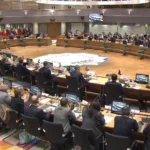Athens, Greece – The Greek real estate market is facing an unprecedented phenomenon of oversupply and weak demand, with recent data revealing more than 131,000 properties for sale across the country. The total market value is estimated at approximately €40 billion.
Despite this massive supply, 85% of properties remain unsold or unleased for periods ranging from 6 to 24 months. This reflects a clear gap between the properties on offer and actual market needs.
Uneven geographical distribution
The largest proportion of real estate is concentrated in the southern suburbs of the capital, Athens, which alone comprise 18% of the total supply (23,039 properties). Central Athens follows with 14% (17,700 properties), while the eastern suburbs represent the lowest share, at only 2%. The remaining properties are spread across the three cities of Crete: Heraklion, Rethymno, and Chania, as well as the western region of Achaia.
Real estate is an obstacle to sales.
According to a recent study conducted by Prosperity Real Estate, 60% of the properties for sale were built within the past 30 years. Properties built in the 1970s (1971-1980) account for the largest share, at 25.4%. These are followed by those built in the 1960s (16.4%). This demonstrates the age of the available real estate infrastructure.
Although Greece has recently experienced a wave of urban development, newly built properties (post-2020) represent only 22.7% of the supply. These properties are often expensive compared to the income of most Greeks. The average price per square meter in some areas, such as the upscale Voula area, reaches €7,200.
Renewal is absent… and the costs are borne by the buyers.
The study indicated that only one in 10 properties has been renovated, meaning that more than 90,000 housing units need a complete overhaul. This burdens buyers with additional costs that may influence their final decision.
Rent..same crisis
The rental market is not much different, with 45,000 units available for rent. However, it too suffers from a similar stagnation due to high prices and limited availability. The vast majority of these remain vacant for extended periods.
Obstacles to urban development
While demand for new housing units is growing, large land areas are hindering construction. Data shows that less than 22% of plots in the Attica region are larger than 1,000 square meters. This limits development opportunities in major urban areas.
Proposals to resolve the crisis
During the Prodexpo 2025 conference, Prosperity CEO Antonis Markopoulos called for increasing homeownership as a national goal. This rate has declined by 12% in recent years.















